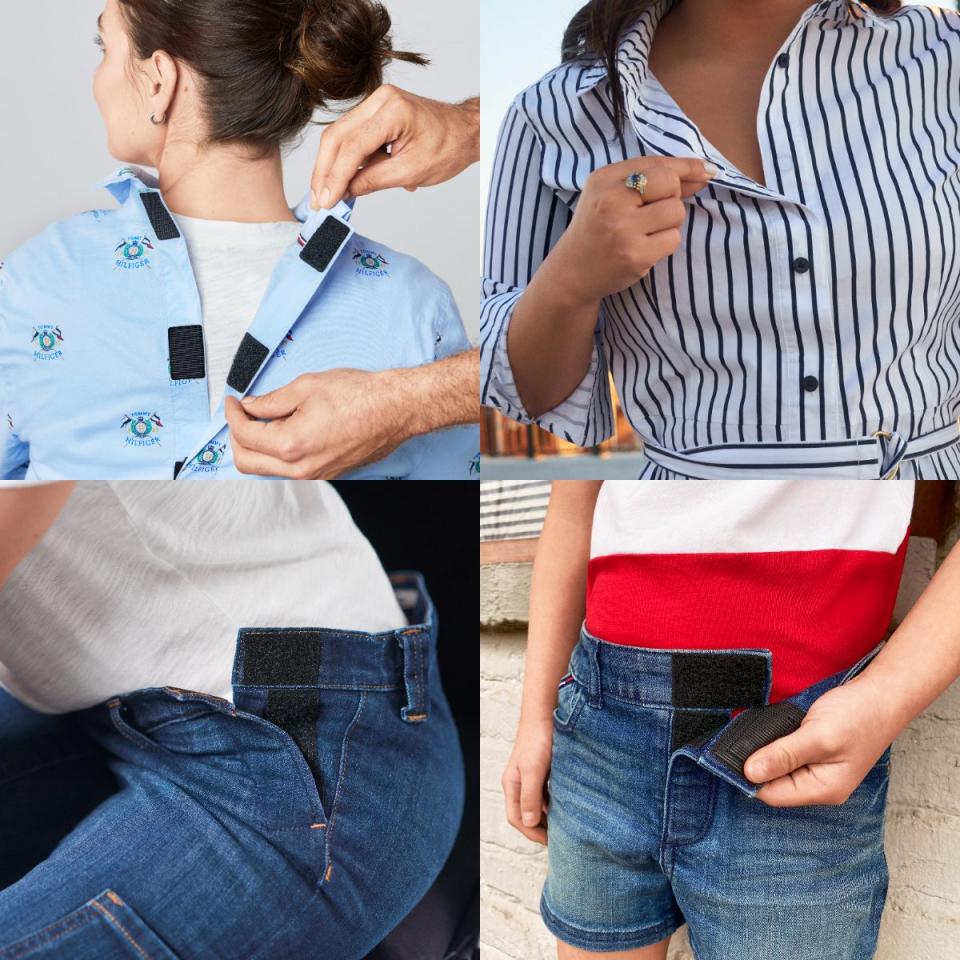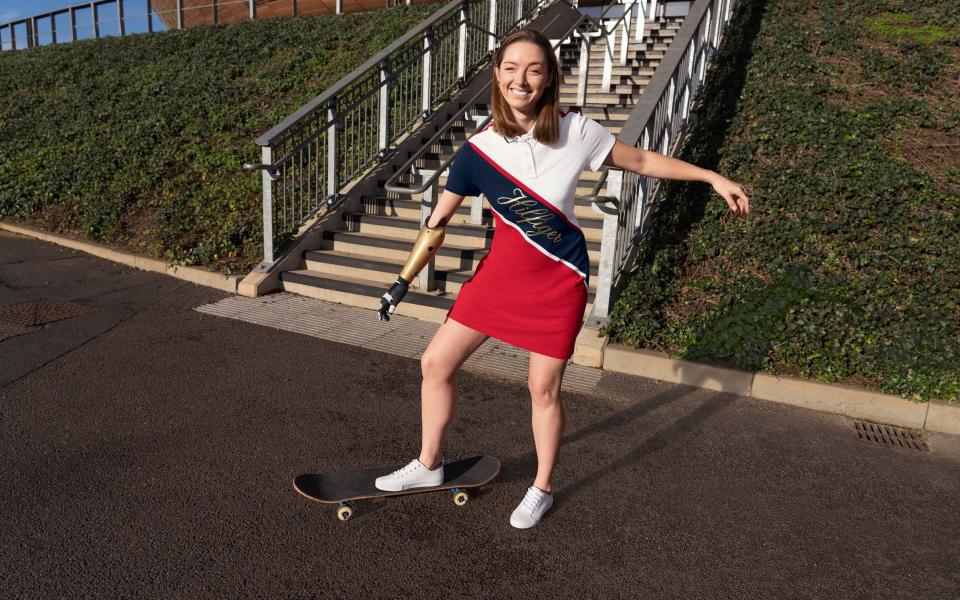Tommy Hilfiger: Fashion can't ignore people with disabilities any more

- Oops!Something went wrong.Please try again later.
- Oops!Something went wrong.Please try again later.
For American fashion pioneer Tommy Hilfiger, creating an adaptive clothing range to suit every body was something of a personal mission.
His children Kathleen and Sebastian were diagnosed as being on the autistic spectrum when they were young children. As Kathleen is now in her 20s, Hilfiger has witnessed her needs and seen how they’ve evolved from childhood into adult life.
“Having first hand experience with children with special needs, my wife [Dee] and I realised that a lot of children cannot zip a zipper, or button buttons, or they have leg braces and difficulty getting in and out of jeans - but they want to look like everyone else,” the designer tells The Telegraph.
“It came to our understanding that there was really no adaptive clothing out there. There was not another designer company ever doing adaptive clothing for people with special needs. So we first came out with a children's line of Adaptive, and as a result of the success we decided to go into adult wear.”
While on the British high street, a handful of shops including Marks and Spencer and ASOS offer some adaptive clothing ranges, it is true that there are very few options to choose from - especially fashion ranges from aspirational and exciting designer labels. Hilfiger is incredibly proud of his offering, which launched first in the United States four years ago and has arrived in the UK in time for this summer season. Every piece in the collection encapsulates the preppy all-American aesthetic that has been his design signature since 1985, yet there are subtle alterations that make it easier to get dressed.

Tweaks like velcro fastenings on the sides of his classic blue jeans instead of zip-fly fronts. Side seams and shoulders on tops that can be opened up via magnets to loosen the neckline, or the body - acknowledging many people’s aversion to or difficulty with pulling garments over their heads. The products cover men’s, women’s and childrenswear and considers a wide range of needs - from the sensitivities experienced by a customer with autism, to the challenges faced by a customer who may be a wheelchair user.
“We've listened to the consumers and their families,” Hilfiger says. “We talked to people who have lost limbs, or are missing body parts, or have difficulties with dexterity. The autistic community happens to be very finicky about the feel of the fabric - it can't be too scratchy. So everything is very soft and it has to be washable and made with quality. We've put a lot of research time and effort into making everything we do as perfect as possible.”
The arrival of the products in the UK has been celebrated by existing and new fans of the brand and, on a wider level, the corresponding campaign imagery has also been widely shared on social media.
“A few years ago there would have been nothing [no work] for me, but I believe that the industry is changing,” says Ashley Young, a London-based model and influencer who stars in the campaign. Young, who was born without her right forearm and has a prosthetic hand, says she is, understandably, “absolutely thrilled” to be working with Hilfiger’s brand.
“While there is still a very long way to go, companies are realising that people want to see themselves using their products and that includes people with disabilities,” she says. “Growing up I did not see anyone at all who looked like me, in the fashion industry but also just in general life. I felt like I was the only one in the whole world who was born like me and felt very alone. That was the driving factor that inspired me to become a model. The feelings I had made me want to never let anyone else feel that way.”

James Marshall-Baquedano, who founded the Prince’s Trust-backed British modelling agency Able Model Management, says that of the 13.9 million people who live with a disability in the UK, a recent study showed 66% said they felt ignored by the fashion industry.
“We aim to bridge the gap between community and industry, by increasing visibility and representation whilst also educating and rewriting the world of fashion,” he says of his company’s mission to get more work bookings for differently abled fashion models.
“Currently, the opportunities for able-bodied models are everywhere. When it comes to finding work for our models we are either contacted by companies who are looking to work more inclusively but need some guidance, or we will reach out to companies, suggesting they plan a shoot using our models.”
Seeing oneself reflected in advertising, Marshall-Baquedano says, is an essential route to greater self confidence and could even boost general awareness and employment opportunities for all people with disabilities or additional needs.
“We all wear clothes, right?” he reasons. “If you are overlooked by an industry that represents everybody else, you can begin to think you may be the problem. The use of photography can truly change perspectives. It can build confidence, motivation and a determination that everyone has a right to.”

Hilfiger’s designer collection is the first of its kind, and as a billionaire businessman he is no stranger to launching industry-changing ideas. In this instance, though, he would be more than happy for other fashion companies to copy his lead.
“I wish other companies would do it,” he says matter of factly.
The ultimate goal, he says, is for “people to feel good about themselves” when wearing designer clothing. “Part of that is also making the clothes affordable. I don't agree with a lot of designers’ philosophy in overpricing clothes, I believe in making them accessible and affordable so everyone can wear them.” Prices for the adult range start at £25, with childrenswear at £16.
When it comes to who he chooses to cast in all of his fashion campaigns these days, Hilfiger says he’s “looking for everybody.”
“I like to think that we are of all ages, all sizes, all colours, all backgrounds. I don't think we should pick and choose from a lens that is obsolete. We're not narrowing into what the fashion world might deem appropriate - that's antiquated thinking.”
For more news, analysis and advice from The Telegraph's fashion desk, click here to sign up to get our weekly newsletter, straight to your inbox every Friday. Follow our Instagram @Telegraphfashion.

